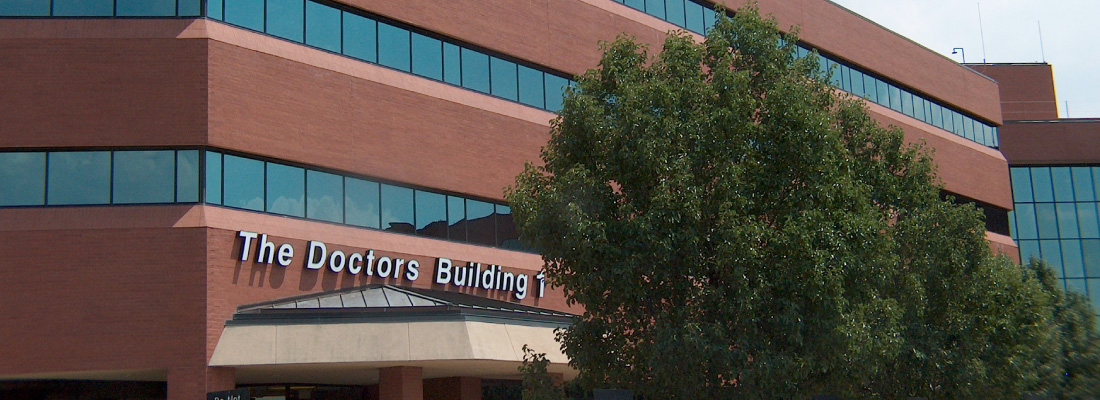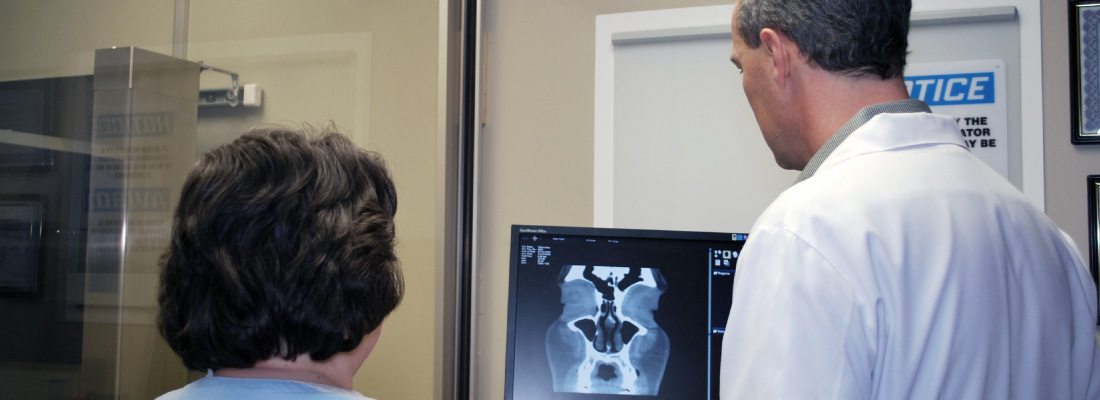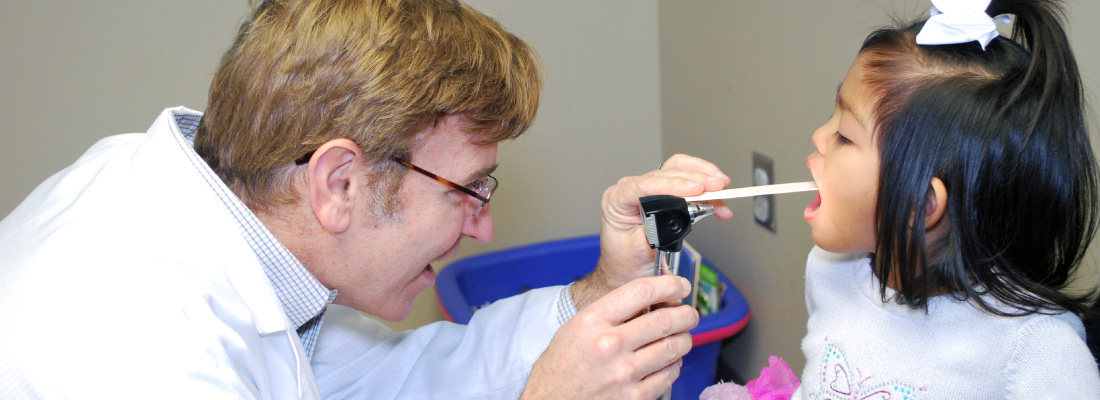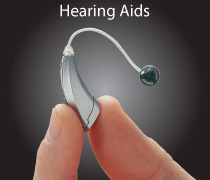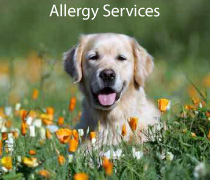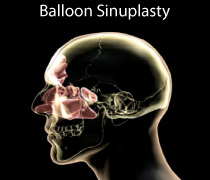Sialadenitis
Sialadenitis is inflammation and enlargement of one or more of the salivary (spit) glands. The salivary glands are responsible for producing and storing saliva. The three major salivary glands are the “parotid” (on the sides of the face in front of the ears), “submandibular” (under the jaw), and “sublingual” glands (under the tongue). All of these glands empty saliva into the mouth through small tubes called ducts.
Sialadenitis can occur due to infection, salivary stones, or an underlying autoimmune disorder. It usually affects the parotid and submandibular glands and is most common among the elderly.
What Are the Symptoms of Sialadenitis?
The symptoms of sialadenitis can include:
- Swelling in the cheek and neck region, especially after eating
- Mouth or facial pain
- Dry mouth
- Foul taste or gritty feeling in the mouth
- Fever
- Chills
- Redness over the side of the face or upper neck
- Pus in the mouth
What Causes Sialadenitis?
Sialadenitis can be caused by a viral infection (such as mumps), bacterial infection, or an autoimmune disease such as Sjogren’s syndrome (see below). Bacterial infections can happen when the flow of saliva is blocked due to stones in the salivary duct or a narrowing of the duct. Dehydration can also cause bacterial infections by reducing saliva flow. Recent illness and the use of antihistamines, beta-blockers, or diuretics can lead to dehydration. Radioactive iodine (RAI), sometimes used for treatment after surgery of thyroid cancer, can also result in salivary gland scarring and sialadenitis because some of the radioactivity can be accumulated in the salivary glands.
Sjogren’s syndrome is an autoimmune disease which effects salivary glands and the “lacrimal” glands of the eyes. This chronic inflammatory disorder causes decreased saliva production in the mouth and decreased tear production in the eyes. In addition to dry mouth and eyes, there may be symptoms of fatigue, muscle aches, or rashes. In extreme cases, Sjogren’s syndrome may affect the lungs, kidneys, liver, and nervous system. People with Sjogren’s syndrome may also have swelling of the parotid or submandibular glands, as well as an unexplained increase in dental cavities or tooth decay.
An ENT (ear, nose, and throat) specialist, or otolaryngologist, may diagnose Sjogren’s syndrome based on persistent symptoms of dry eyes and/or mouth, parotid gland enlargement, and abnormal blood test results. A lip biopsy can confirm the diagnosis. Sjogren’s syndrome is treated conservatively with symptomatic relief. Oral rinses and hydration are advised along with lubricating eye drops.
What Are the Treatment Options?
Treatment for sialadenitis includes good oral hygiene, increasing fluid intake, massaging over the affected gland, applying a warm compress, and using candies or foods which increase saliva (such as lemon drops). In some cases, if the cause is bacterial, antibiotics may be prescribed. Antibiotics are not useful for viral infections. An endoscopic procedure with a very small camera (called Sialendoscopy) can be used in certain cases.
Most salivary gland infections resolve or are cured with conservative treatment after one week. In rare cases of recurrent sialadenitis, surgery may be necessary to remove part or all of the gland.
What Questions Should I Ask My Doctor?
- Is there anything I can do to decrease the chances of future episodes of sialadenitis?
- Do any of my current medications increase my risk of sialadenitis?
- How do I know if there is an underlying disease that is causing my sialadenitis?
Sensorineural Hearing Loss (SNHL)
Hearing loss can be broadly separated into two categories: conductive (problems in delivering sound to the inner ear) and sensorineural (problems of the inner ear, or cochlea, and/or the auditory nerve that connects the inner ear to the brain). Sensorineural hearing loss (SNHL) happens when there is damage to tiny hair cells in the cochlear and/or the auditory nerve. In children, the most common causes of SNHL include inner ear abnormalities, genetic variations, jaundice (or a yellowing of the skin or whites of the eyes), and viral infection from the mother during pregnancy. In adults, SNHL is most commonly caused by aging, exposure to loud noises, head trauma, or other conditions (see below for more detail).
What Are the Symptoms of SNHL?
Symptoms of SNHL may include:
- Muffled hearing
- Difficulty understanding speech
- Sudden or steady loss of hearing
- Full or “stuffy” sensation in the ear
- Ringing in the ear
- Dizziness
What Causes SNHL?
SNHL happens when there is damage to tiny hair cells in the cochlear and/or the auditory nerve. Sound energy reaches the cochlea, but damaged hair cells are unable to convert sound waves into neural signals that pass through the auditory nerve to the brain. Auditory nerve abnormalities will also cause SNHL. Other causes may include:
- Sudden hearing loss—caused by a virus; you should see an ENT (ear, nose, and throat) specialist, or otolaryngologist, for urgent treatment that could help recover some hearing
- Aging—gradual SNHL that cannot be reversed (most common)
- Acoustic trauma—exposure to loud noises (e.g., industrial/machinery or explosion/gunfire close to the ear; can be prevented with proper protection)
- Head trauma or abrupt changes in air pressure—this can cause the space that contains inner ear fluid to rupture
- Autoimmune inner ear disease—the body’s immune system attacks the inner ear and causes progressive hearing loss in both ears
- Ménière’s disease—a condition characterized by fluctuating hearing loss, dizziness, ear fullness, or ringing in the ears (called tinnitus)
- Central nervous disease—damage caused by a condition such as multiple sclerosis
- Cochlear otosclerosis—abnormal bone growth in the inner ear
- Congenital inner ear malformation—genetic or environmental abnormalities (very common cause in children)
- Benign tumor—called “vestibular schwannoma,” this is a noncancerous tumor on the adjacent balance nerve that compresses the hearing nerve that connects the inner ear to the brain, causing SNHL
What Are the Treatment Options?
If you are experiencing hearing loss, you should see an ENT specialist who can make the correct diagnosis. This is important because the treatment for hearing loss depends on the cause. Once a diagnosis is made, your physician will be able to talk to you about all treatment options. A critical part of the evaluation will be a hearing test (audiogram) performed by an audiologist to determine the severity of your hearing loss, as well as whether it is conductive, sensorineural, or a combination of both.
Your ENT specialist may recommend specific treatment options based on the results of your hearing test, or other potential tests such as a CT or MRI imaging scan. Treatment options can include:
- Continuing observation with repeated hearing tests
- Medical therapy—corticosteroids (oral or injection through the eardrum) may be used to reduce cochlear hair cell swelling and inflammation after exposure to loud noises; diuretics may be used for Ménière’s disease
- Low-sodium diet
- Evaluation and fitting of a hearing aid(s) or other assistive listening devices
- Preferential seating in class for school children
- Surgery to correct the cause of the hearing loss
- Surgery to implant a hearing device
SNHL can be treated with the use of conventional hearing aids or an implantable hearing device. Again, your ENT specialist and/or audiologist can help you decide which device may work best for you depending on your hearing test results and your lifestyle.
What Questions Should I Ask My Doctor?
- What is the cause of my hearing loss?
- Will my hearing loss likely get worse with time?
- What are my treatment options?
- What are the risks of the surgery you are recommending?
- Do you do this surgery frequently?
Rhinitis
Rhinitis is a condition that typically involves nasal obstruction or congestion, runny nose or post-nasal drip, itchy nose, and/or sneezing. There are various causes for these symptoms, although they are broadly divided into two types: allergic rhinitis (nasal symptoms related to allergy) and non-allergic rhinitis (nasal symptoms that are not related to allergy).
What Are the Symptoms of Rhinitis?
Symptoms of rhinitis may include:
- Nasal blockage or congestion
- Sneezing
- Runny nose or postnasal drainage
- Itchy nose
Rhinitis may occur before a case of sinusitis or with sinusitis, a condition where infection or inflammation affects the sinuses. If you have facial pressure, decreased sense of smell, or a greenish-yellow nasal drainage, you may also have sinusitis. A qualified ENT (ear, nose, and throat) specialist, or otolaryngologist, can provide a thorough evaluation and appropriate treatment for your nasal/sinus condition.
What Causes Rhinitis?
Allergic rhinitis, also known as hay fever, occurs when your body’s immune system over-responds to specific, non-infectious particles such as plant pollens, molds, dust mites, animal proteins, chemicals, foods, medicines, insect venom, and other triggers. During an allergic attack, a special antibody (fighting protein), called IgE, attaches to cells that release histamine and other chemicals in the lungs, skin, and the mucous linings of the body. These chemicals open the blood vessels and produce skin redness and swollen membranes. When this happens in the nose, sneezing, itching, runny nose, and congestion occur.
Seasonal allergic rhinitis depends on specific plants that are pollenating at that time. In the United States, springtime allergic rhinitis is typically due to pollinating trees. Early summer allergic rhinitis is often due to grass pollination, and allergic rhinitis in the fall is usually due to weeds pollinating. Hypersensitivity to ragweed is very common in autumn. Also in the fall, you may experience allergic symptoms from mold spores on falling leaves.
Perennial allergic rhinitis can be felt year-round and can result from sensitivity to animal proteins, mold, houseplants, and dust mites in carpeting and upholstery. When seeking a medical evaluation for suspected allergic rhinitis, it is important to be aware of the pattern of symptoms (seasonal triggers, indoor vs. outdoor, specific triggers, animal exposure, etc.).
Non-allergic rhinitis and vasomotor rhinitis (a type of non-allergic rhinitis) do not depend on the presence of IgE antibodies, and is not due to an allergic reaction. You can have non-allergic rhinitis even if you test positive for allergies. Some of the causes of non-allergic rhinitis include:
- Certain infections
- Certain medications (various over-the-counter and prescription preparations)
- Eating and drinking (sometimes specific foods, sometimes all food/drink consumption)
- Weather or temperature changes
- Aging
- Hormonal changes or pregnancy
- Consumption of alcohol, especially red wine
- Inflammation or irritation in the nose unrelated to allergy
- Nasal symptoms of other medical conditions
Are There Related Factors and Conditions?
Depending on the type of rhinitis, certain conditions may be associated, such as:
- Asthma
- Acute sinusitis
- Inflammation of the eye (conjunctivitis)
- Atopic dermatitis or eczema
- Poor ventilation of the ears (or eustachian tube dysfunction)
- Laryngitis (inflammation causing hoarseness of voice)
- Eosinophilic esophagitis
- Sleep disturbance
What Are the Treatment Options?
Treating rhinitis depends on the specific cause or diagnosis. If there is a specific trigger that can be avoided, this may be a successful treatment. For example, in people with cat allergy, avoidance of cat exposure and direct contact with cats may help to control symptoms.
Often, medications are used to control symptoms. Depending on the specific cause of the rhinitis symptoms, some of the medications that may be used include:
- Intranasal saline spray or rinse
- Antihistamines (oral or intranasal)
- Corticosteroids (usually applied as an intranasal spray)
- Ipratropium bromide intranasal spray
For allergic rhinitis, allergen immunotherapy may be an option. This is most commonly provided via allergy shots or tablets or liquid drops taken under the tongue. Again, a qualified ENT specialist or allergist should assess your situation to determine whether allergen immunotherapy is an option.
For severe runny nose or nasal obstruction/congestion that does not respond to medications, your ENT specialist may consider additional office procedures or surgery appropriate to your situation.
What Questions Should I Ask My Doctor?
- What is the most likely cause of my rhinitis symptoms?
- Is allergy testing a consideration in my case?
- Will avoiding certain triggers help to improve my symptoms?
- Which medications are best suited to treat my condition?
- Are any additional evaluations necessary? Lab tests? Consultations with other specialists?
Post-Nasal Drip
Glands in your nose and throat continually produce mucus, normally one to two quarts per day. Mucus moistens and cleans the nasal lining, moistens air, traps and clears what is inhaled, and helps fight infection. Mucus is normally swallowed unconsciously, but when there is a feeling of the mucus gathering in the throat or dripping from the back of your nose, it is called post-nasal drip.
What Are the Symptoms of Post-nasal Drip?
Symptoms of post-nasal drip can include:
- Feeling of mucus drainage into the throat
- Frequent swallowing
- Throat clearing
- Raspy or gurgling speech
- Sore irritated throat
- Feeling a lump in the throat
In children, thick or foul-smelling secretions from one side of the nose can mean that something is stuck in the nose such as a bean, wadded paper, or piece of a toy. If these symptoms are observed, seek a physician for examination.
Post-nasal drip often leads to a sore, irritated throat. Although there is usually no infection, the tonsils and other tissues in the throat may swell. This can cause discomfort or a feeling that there is a lump in the throat. Successful treatment of the post-nasal drip will usually clear up these throat symptoms.
What Causes Post-nasal Drip?
Causes of post-nasal drip can include:
- Bacterial infections
- Allergies
- Vasomotor rhinitis (overly sensitive nose)
- Medications that thicken mucus
- Gastroesophageal reflux
- Age
Thin clear secretions can be due to colds and flu, allergies, cold temperatures, bright lights, certain foods or spices, pregnancy, and other hormonal changes. Various drugs (including birth control pills and high blood pressure medications) and irregular nose cartilage can also produce increased mucus.
Thick secretions in winter often result from dryness in heated spaces. They can also come from sinus or nose infections and allergies, especially to foods such as dairy products. If thin secretions become thick, and turn green or yellow, it is possible that a bacterial sinus infection is developing.
What Are the Treatment Options?
Diagnosing post-nasal drip may include a detailed ear, nose, and throat exam, endoscopy (using a camera to look inside the nose and throat), or X-rays. Post-nasal drip can be difficult to cure, and treatment varies according to the cause:
- Bacterial infections are usually treated with antibiotics, nasal spray, decongestants, and nasal saline irrigations. For chronic sinusitis, surgery to open the blocked sinuses may be required.
- Allergies are best managed by avoiding the causes. Antihistamines, decongestants, cromolyn and steroid nasal sprays, or oral steroids may offer relief. Some older, sedating antihistamines may dry and thicken post-nasal secretions more; newer non-drowsy antihistamines do not have this effect. Immunotherapy (desensitization) using allergy shots or drops under the tongue may help. Talk to your doctor before starting any of these medications.
- Gastroesophageal reflux treatment includes elevating the head of the bed six to eight inches, avoiding food and beverages for at least three hours before bedtime, weight loss, and eliminating alcohol and caffeine from the diet. Antacids such as TUMS®, Mylanta®, and Gaviscon®, or acid blockers such as Zantac® or Pepcid® also provide benefit. If the reflux does not get better, you should see your primary care provider, or an ENT (ear, nose, and throat) specialist, or otolaryngologist.
- Measures that allow mucus secretions to pass more easily may be recommended. Many people, especially older persons, need more fluids to thin out secretions. Drinking more water, eliminating caffeine, and if possible avoiding diuretics (medications that remove fluid from the body by increasing urination) will help. Mucous-thinning agents such as guaifenesin (Mucinex®, Robitussin®) make secretions thinner. Saline nasal irrigations alleviate thickened secretions. Nonprescription saline nasal spray (Ocean®, Ayr®) is a natural way to moisten the nose.
Related Conditions
Several other conditions may feel like post-nasal drip but are swallowing problems caused by a backup of solids or liquids in the throat. Conditions that may be related to post-nasal drip include:
- Sinus conditions
- Rhinitis
- Gastroesophageal reflux disease
- Allergies
What Questions Should I Ask My Doctor?
- What is the cause of my post-nasal drip?
- Are there any changes in my symptoms that I should be watching out for?
- Are there serious complications that could develop?





